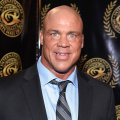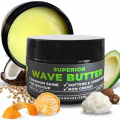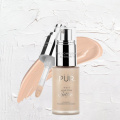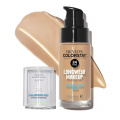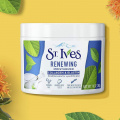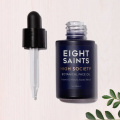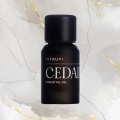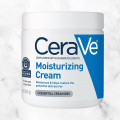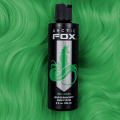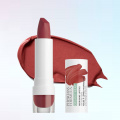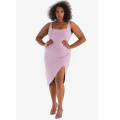How To (Safely) Bleach Your Hair in the Comfort of Home
Bleaching hair at home may seem daunting. But with the right tools, this beauty process is a breeze.
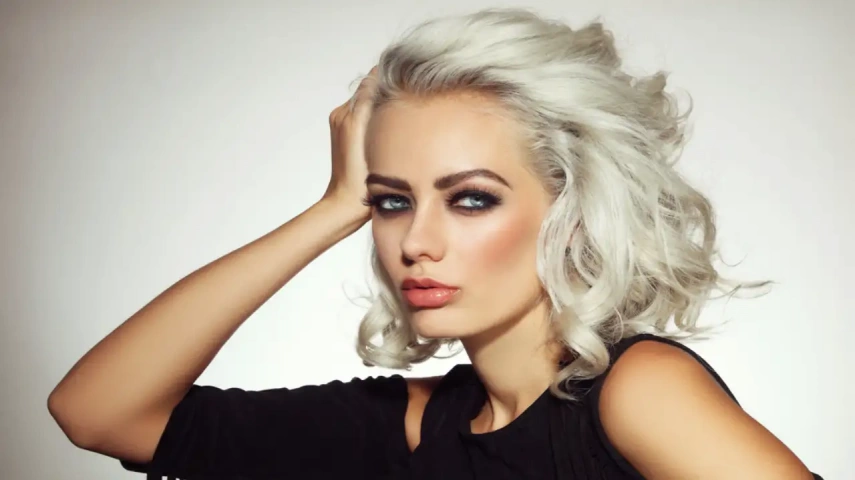
From embracing avant-garde pink highlights to flaunting an elegant blonde mane, various beauty experiments with your hair call for cautious bleaching. While the term may sound like planning a trip to the salon, bleaching hair at home can be a simple process with the right products and knowledge. Think about post-bleach hair care, mistakes to avoid, products to add to your cabinet, side effects, and more.
So, are you wondering how to bleach hair correctly? Ahead, we have put together the ultimate beauty edit of everything you should consider before you decide to bleach hair at home.
Things to Know Before Bleaching Your Hair
Prepare Your Hair in Advance for Bleach Hair Color
Hair bleaching is a complex chemical dye technique that may cause disruptions in the hair structure. The process begins with an alkaline agent that opens up the hair cuticles while an oxidizing agent causes melanin granule degradation. Melanin is the naturally occurring pigment in your hair which determines its color (1). Additionally, the hydroxide and peroxide present in this chemical treatment gets easy access to the cortex and cuticles of the hair which further results in protein loss from hair fibers. Hence, to prevent excessive damage, it is advised to start preparing your tresses in advance before adding bleach on hair. Here’s what you may do: Stop undergoing any intense hair treatments almost three months before bleaching as the process works best on virgin/healthy and strong hair. Subsequently, stop using heat to style your hair a week before bleaching to make your hair less susceptible to damage.
Try Not to Bleach Near Your Roots
Studies suggest that if your hair and scalp undergo prolonged exposure to bleaching products, it can result in scalp burns (2). While these burns can often be superficial, they may lead to unanticipated injuries or complications later. Hence, while you are bleaching hair at home, it is recommended to keep the bleach color as far away as possible from your scalp and avoid bleaching hair around the roots. So, if you want to try a new hairstyle that requires bleaching near the roots, it is best to consult a hair care professional before you begin the process at home.
Bleaching May Alter the Natural Texture of Your Hair
The chemical constituents of bleach hair color such as hydrogen peroxide, persulfates, and alkalizing agents may lead to permanent damage to hair fibers (1). As these chemicals lead to open hair cuticles, they may cause the hair strands to fray, become frizzy, and become tricky to manage due to tangling. While hydrating and conditioning treatments may help reduce the adverse effects, bleaching frequently may regardless change the texture of your hair in the long run.
Remove All Sorts of Jewelry Before Bleaching
Before you decide to bleach your hair at home, it is important to remove all the jewelry. Studies suggest that the chemical constituents of bleach might react with jewelry metals, which may eventually lead to skin injuries and burns (7).
Do a Skin Patch Test
There might be a probability that the bleach color may cause burns on your skin (2). Hence, it is best to do a skin-patch test with the product before you apply it on your hair and scalp. This will help you avoid major injuries and burns later.
How to Bleach Your Hair at Home Safely — Step-by-step Guide

Now that you’re aware of the things to consider before you proceed with bleaching, as a next step you may be thinking of how to bleach hair (safely) at home. But don’t fret because we’ve got your back. Here’s a step-by-step guide for how to bleach hair at home on your own:
1. Prep with Old Clothes And Gloves
While bleaching, it is best to wear an old tee that you don’t mind getting dirty as some product might rub off or fall on it. Additionally, wear gloves on both hands to avoid bleach coming in contact with your skin as it may cause itchiness, redness, or unforeseen burns (2).
2. Section Your Hair into Different Quadrants
Take a comb and brush out all the knots in your tresses. Then, section your hair into different parts for easy navigation and application. While bleaching, you will need to make sure that you apply the product on each section and strand properly to ensure complete saturation of the bleach color.
3. Mix the Developer with Bleach Color
In a bowl, mix the developer and bleach colors for application. While doing this, it is imperative to ensure that the mixture is consistent and doesn’t have any lumps.
4. Start Applying the Product to Hair
Once the mixture is prepared, start by bleaching ends. It is advised to start applying bleach color on tips and mid-lengths first because the hair strands take a longer time to lighten in these areas. Once you have applied the product to this part of the hair in all sections, gradually proceed to the scalp. The scalp area processes the bleach color faster due to body heat. To avoid scalp burns, it is best to apply the bleach mix one inch away from the scalp.
5. Sit Back And Allow the Bleach to Process
After the application step is complete, you may relax and let the product do its work. Wondering how long do you leave bleach in your hair? Depending on the type of result you want and the package instructions, the bleach can be removed or allowed to remain in the hair. However, the product shouldn’t stay in your hair for more than 30 minutes. Prolonged exposure to the bleach color might lead to detrimental effects like protein loss, brittle hair texture, rough strands, and more (1), (5).
6. Wash off the Product with a Balancing Shampoo
The last step is to get into the shower and remove the bleach color from your hair thoroughly. The pH level of the human scalp is 5.5, while the pH level of the hair shaft is 3.67; hence it is recommended to use a balancing shampoo and condition to ensure that the pH balance is maintained. This will help in reducing the friction between hair fibers (3).
7. Use a Toner to Remove Brassy Tones
While this step is optional, it is recommended if you would like to remove the warm or brassy tones from your hair post-bleaching. So, as soon as you have washed off the product, dry your hair and use a toner to get the desired result.
Taking Care of Your Hair After Bleaching
After bleaching, your hair might experience frizz, dryness, and breakage (1). To combat these negative consequences, it is crucial to consciously take care of your hair and reduce the impact. Here’s what you may do:
1. Inculcate the Habit of Oiling Your Hair
Post-bleaching, your hair texture may become rough and unmanageable. To diminish this effect, oiling your hair may help. Scientific research suggests that using coconut oil can reduce protein loss in both treated and untreated hair. Coconut oil is a triglyceride of lauric acid (principal fatty acid) which has a low molecular weight and straight linear chain which allows it to penetrate inside the hair shaft. Moreover, coconut oil supports hair proteins which allows it to nourish and smoothen hair naturally (4), (1).
2. Avoid Styling Hair with Heat
Bleach hair color may make your hair dry and vulnerable to heat styling. Hence, haircare professionals advise eliminating blow-drying, curling, and straightening hair for at least two weeks after bleaching hair. The effect of heat on bleached hair may be more aggressive and harmful than the actual bleach color (5), (9).
3. Cut Back on Shampooing Hair
After you are done bleaching with your hair, the natural oils from your hair follicles may be stripped away. To promote natural oil retention and production in hair, it is best to wash your hair just once or twice a week. Additionally, you may dilute your shampoo with water or use a pH-level-balancing shampoo to ensure elevated care (3).
4. Use Only Natural Or Organic Hair Care Products
Products like shampoos and conditioners may contain harmful chemicals such as formaldehyde releasing preservatives, parabens, benzophenones etc which can cause further damage to bleached hair (5). As your hair is already very vulnerable post-bleaching, it is best to opt for natural haircare products like a DIY protein-rich hair mask made with eggs (6).
Mistakes to Avoid While Bleaching Your Hair

While you are beginning the process of bleaching your hair at home, it is important to take a few precautions. Here are some mistakes you should avoid while bleaching hair on your own:
- Not researching about your hair type and if it is ready to accept bleach color
- Leaving the bleach color on your hair for too long (more than 30 minutes)
- Washing off the bleach color with hot water
- Not reading the instructions properly on the bleach color packaging box
- Skipping strand tests and skin-patch tests before applying bleach to hair
- Not using a hair toner to eliminate the brassy tones after bleach
- Bleaching chemically treated, colored, or damaged hair
- Not removing all sorts of jewelry while you are bleaching hair (7)
- Not sectioning hair properly and applying the bleach unevenly
- Not using the right tools
When to Bleach And When Not to Do It
Before you decide on bleaching hair from home, there are certain factors that you should consider.
- How hydrated is your hair?
- Does the texture of your hair feel coarse?
- When did you last color, bleach, or get an in-salon service?
If post chemical treatments, you feel that your hair has a fine texture or is experiencing issues like dryness, frizz, and breakage, then it is best to wait till your hair is back to its natural state. Before bleaching, it is crucial to determine the health of your hair and understand whether or not it is capable of accepting the bleach color. Hence, the quality and condition of your hair should help determine if it is safe to bleach it or not. In case you are confused, it is always best to consult your hair care professional for advice.
Products You’ll Need for Bleaching Hair at Home

When you are prepared to start bleaching hair at home, the next step is to gather all the products and tools in one place. Here’s everything that you will require for the process:
1. A Bleaching Color Kit
It is important to choose a kit that will simplify things for you. It should include bleach powder, a developer, gloves, and an instruction manual. Ensure to follow these instructions cautiously.
2. An Old Tee
Since the process of bleaching hair may be messy, it is best to wear an old tee that you don’t mind getting dirty. This will ensure that the bleach color doesn’t come in direct contact with your skin (2).
3. Mixing Bowl And Brush
You will need a bowl and brush to mix the bleach powder and developer. It is important to use a plastic bowl instead of a metallic bowl, as the chemical composition of bleach color might react with the metal.
4. Hair Clips And Comb
It is also essential to keep important tools ready — like hair clips and comb. This equipment will help you section your hair into distinct quadrants and keep them in place while you bleach your hair.
5. pH-balancing Shampoo And Towel
After bleaching your hair, it is important to wash it off with a pH-balancing shampoo to ensure that the pH balance is maintained between the hair and scalp. A towel would be required to dry your hair after washing.
Side Effects of Bleaching Hair
The chemical constituents of bleach powder comprise an oxidizing agent (hydrogen peroxide) and also an alkaline agent (ammonium hydroxide). Together, these elements permeate into the hair fiber and may cause significant damage by breaking the melanin in hair cuticles.
The consequence of this is adverse effects on hair which often range from significant protein loss, scalp burns, frizz, rough texture, and decreased porosity (1), (2), (8).
Conclusion
With the right tools and knowledge at your disposal, bleaching hair from home can be a simple process. However, it is important to examine the condition of your hair to determine if bleaching is safe or not. In case your hair is chemically treated, it is best to wait for two to three months so that it comes back to its normal state. Before you begin bleaching at home, it is also imperative to gather all your equipment in one place for a smoother process.
While this beauty procedure may help you achieve your desired result, it also comes with its share of side effects. It is crucial to understand these consequences and take care of your hair accordingly post-bleach. In case you are still confused about how to bleach hair at home, then it is always a good idea to consult a hair care professional for advice and guidance.
Sources:
1. The physical and chemical disruption of human hair after bleaching - studies by transmission electron microscopy and redox proteomics
https://pubmed.ncbi.nlm.nih.gov/30229956/
2. Significant damage of the skin and hair following hair bleaching
https://pubmed.ncbi.nlm.nih.gov/20860738/
3. The shampoo pH can affect the hair: myth or reality?
https://www.ncbi.nlm.nih.gov/pmc/articles/PMC4158629/
4. Effect of mineral oil, sunflower oil, and coconut oil on prevention of hair damage
https://pubmed.ncbi.nlm.nih.gov/12715094/
5. Hair cosmetics: an overview
https://www.ncbi.nlm.nih.gov/pmc/articles/PMC4387693/
6. Eggs: good or bad?
https://pubmed.ncbi.nlm.nih.gov/27126575/#:~:text=Eggs%20have%20one
7. Hair bleaching and skin burning
https://www.ncbi.nlm.nih.gov/pmc/articles/PMC3664529/
8. Labile proteins accumulated in damaged hair upon permanent waving and bleaching treatments
https://pubmed.ncbi.nlm.nih.gov/12512011/
9. Significant damage of the skin and hair following hair bleaching
https://pubmed.ncbi.nlm.nih.gov/20860738/
ALSO READ: 16 Best Conditioners for Bleached Hair: Pros, Cons, Buying Guide





 JOIN OUR WHATSAPP CHANNEL
JOIN OUR WHATSAPP CHANNEL

























